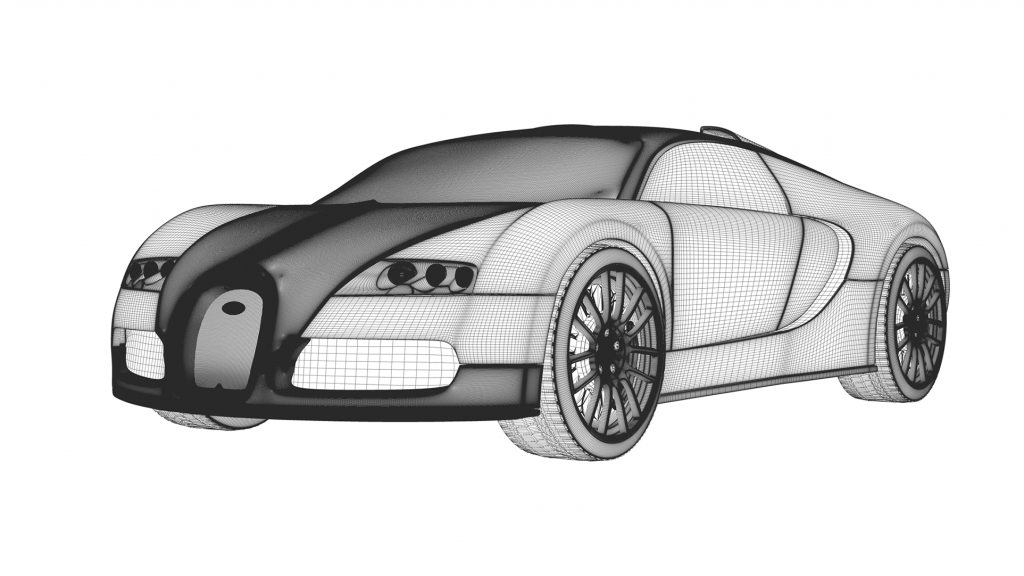
You don’t have to be a car guru to have heard of car prototypes, but you might have wondered why these cars exist and what they mean to the development of the cars you see on the road.
The truth is automakers have always loved experimenting with different concepts. Just take a look at the 1958 Sir Vival! Can you imagine driving one of those?
Car prototyping basically means that automakers design a concept car that serves as a prototype to showcase the technological and engineering developments they have accomplished.
They are a staple at auto shows where they garner attention for their innovative designs.
Early Prototypes
Automobiles were highly experimental in their early years. One of the coolest was the Rolls-Royce Silver Ghost, originally dubbed the “40/50 hp”. The chassis was put on display at the Olympia car show in 1906.
In 1907, a demonstrator car was ordered, and, using the twelfth 40/50 hp ever made, the “Silver Ghost” was created. It was named such for its quiet performance. It became a reputable car that set the standard for handling and steering.
In the 1930s, Harvey Earl, who served as General Motors’ first Vice President of Design, led the GM Styling Division on creating a vehicle known as the Buick Y-Job.
This experimental auto came with body-colored door handles and flip headlights. While this served as a prototype for vehicles GM later developed, it was actually Earl’s personal car for years!
Other early examples of car prototyping include the 1953 Manta Ray, which was built by engineers who also created jet aircraft and guided missiles. As time went on, this idea of being aerodynamic turned into the manufacturing of some futuristic cars.
Modern Concept Cars
By the 1980s, concept cars looked more like futuristic aircraft. The 1982 SAAB Viking and the 1980 Vector W2 Twin Turbo look like they belong in Back to the Future as opposed to simply driving along the road.
Today, we are seeing some truly innovative prototypes, such as the Sony Vision-S concept, which has a grand total of 33 sensors built into the car which help its driver assistance features detect nearby vehicles and pedestrians.
And, let’s face it, the Mercedes-Benz Vision AVTR concept looks like it came right out of a movie – and it kind of did! The automakers drew inspiration from James Cameron’s futuristic 2009 film Avatar.
Designing a Concept Car
Concept cars are all about using radical new design and mechanical features. Materials used range from carbon fiber to paper. They also usually involve using different layouts that what you will find on standard automobiles.
They might have three doors and five wheels or five wheels and three doors. The kookier, the better!
Of course, kookiness might mean that some of these cars are not practical (or comfortable) to drive. A lot of concept cars never go beyond existing as computer designs or scale models.
If the vehicle includes traditional elements, then it can become drivable. It just needs to have a powertrain and drivetrain that will power it.
Electric and Plug-in Concepts Are All the Rage
These days, automakers like to play around with prototyping hybrid, plug-in hybrid, and fully electric powertrains. Going green brings in the greens these days, and automakers are all about experimenting with clean energy technology.
In 2011, Chevrolet began making a plug-in electric motor that was paired with a gas-powered engine, which brought the now-popular Chevy Volt into being. Tesla has also been hard at work designing vehicles like the Roadster and the Model S, a concept sedan that runs purely on electricity.
The Model S Long Range gets 373 miles of all-electric range, which bests every other battery-electric car on the market as of April 2019. In 2015 and 2016, it was the highest-selling plug-in electric car in the world.
When a concept is drivable, a drivetrain will be borrowed from a vehicle that is already being produced by the automaker or might need some tweaking but it otherwise capable of working.
Concept cars do not live long lives though, and the concept prototypes are often destroyed once they are deemed no longer useful.
What Will Car Prototyping Be Like in the future?
Right now, many automakers are struggling to adapt to the consumers’ demand for electric vehicles. Spikes in fuel prices and a long list of recalls for just about every popular manufacturer you can name have created financial difficulties.
Automakers are dumping what money they make into developing car prototyping that will shape future vehicles.
Drivers want to buy vehicles with high marks for utility, comfort, and performance. And, of course, more drivers are looking for something that runs on clean energy.
If automakers do not listen to consumer demands and try to come up with creative solutions, they are going to be even more strapped for cash.
Going Forward
Automakers who focus on clean energy car prototyping are becoming increasingly competitive, as can already be seen with Tesla.
Going even beyond that, driverless technology is taking the forefront of concept design. The French automaker Renault debuted the EZ-Ultimo at the 2018 Paris Motor show.
This driverless luxury limo embraces the idea of building cars for “smart cities”. Vehicles are becoming more autonomous, and large cities are looking for creative ways to clear up traffic-jammed roads and overcrowded parking lots.
Concept prototyping is a crucial part of technological advancement in the auto industry. Stagnation and relying on what worked in the past is costing automakers a ridiculous amount of money that they simply cannot afford to lose.
If manufacturers do not invest in experimental concept cars, then they are probably going to struggle moving forward into the future as consumer demands are clearly already changing.
And, let’s face it, concept cars are just downright cool to look at, even from the confines of your computer monitor.




